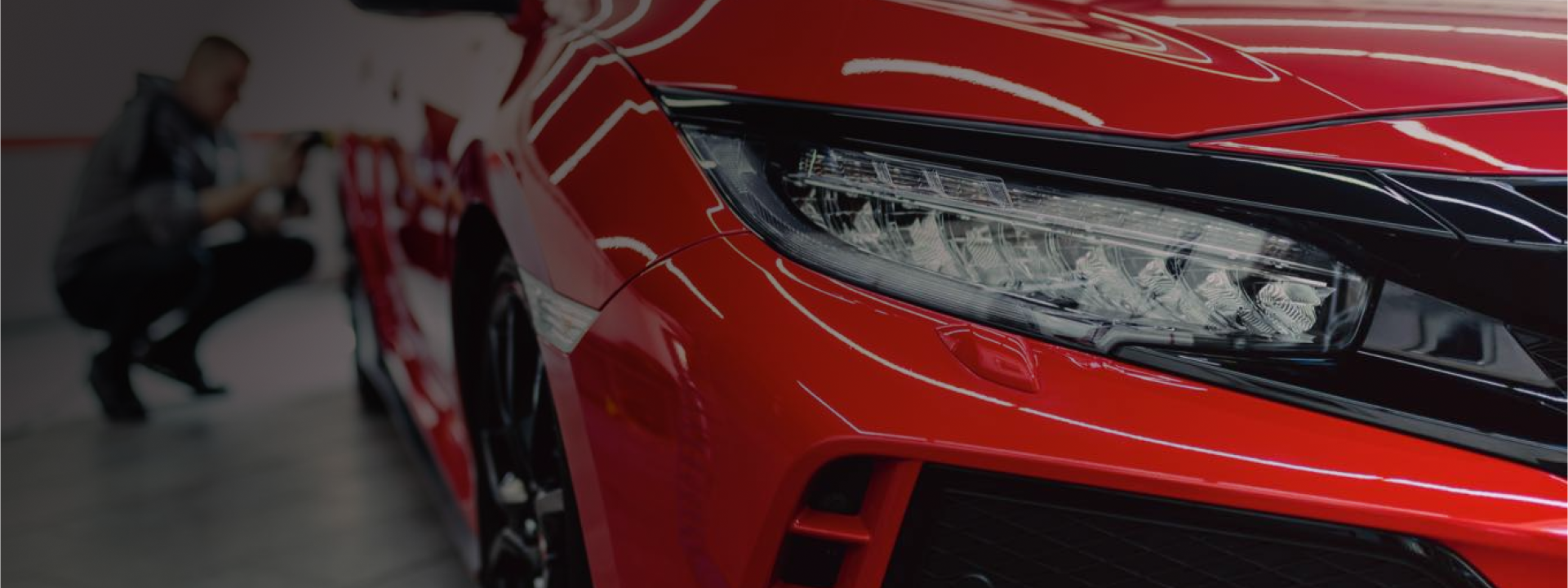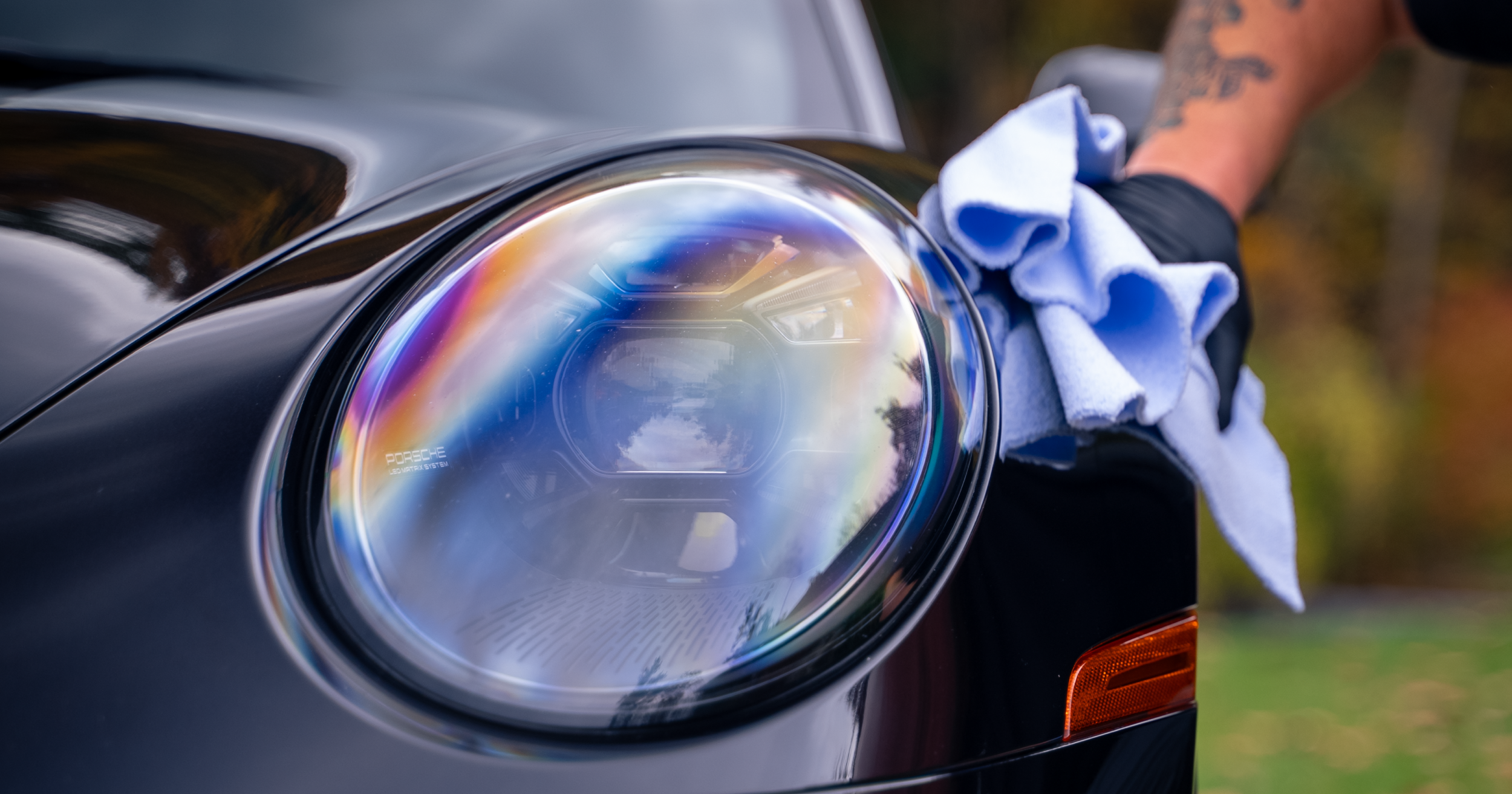Paint Correction Lights That Detailers Use: Proper Lighting for Professional Quality Paint Correction Results
If you're looking to get professional quality results and glossy reflections from your auto detailing paint correction efforts, you will need proper lighting in your shop or workspace. Paint correction is crucial to maintaining your vehicle's clear coat and is an essential part of car care. However, without proper lighting, imperfections can be missed.
Table of Contents
- Why Light Matters
- Light Explained
- Lumen
- Color Temperature
- Kelvin
- Normal Daylight
- Light Sources & Types
- Non-White Light
- Halogen
- LED
- Mixed Light
- Key Takeaways
Why Does Paint Correction Lighting Matter?
Proper lighting for buffing is crucial, impacting refinement, labor, and cost. Without it, accurate assessment and optimal results are hindered. This is why proper paint correction light is vital at every stage of the paint correction process.
Detailers frequently need to upgrade lighting for shops or on-the-go services. It is important to consider the type of lighting you plan to use. More light is not necessarily more effective if the type of light is not ideal for highlighting imperfections. It is critical to invest in inspection lights that accurately reveal paintwork conditions.
The Science of Light: Light Explained
Understanding lighting for detailing paint correction requires a basic grasp of the anatomy of light. Knowing these aspects of lighting and how they work together is a major advantage in reaching a flawless finish.

What is a Lumen?
A lumen is the quantity of visible light discharged from a single source, approximately equal to the illumination produced by a single candle. In essence, lumens gauge the relative intensity or brightness level of light emanating from a source.
The Color Temperature of Light
Color temperature, measured on the Kelvin scale, indicates the perceived color of a light source. It spans a spectrum from deep red to orange, yellow, white, to bright blue. Lower Kelvin temperatures are deemed "warm," emitting orange to red light, while higher temperatures are deemed "cool," emitting more blue light.
Measuring Light in Kelvins
The Kelvin (K) measures light color temperature and is represented on the Kelvin Scale, which spans values from 1000K to 10000K. In commercial and residential lighting, color temperatures typically range from 2000K to 6500K. Warm color temperatures are usually 3000K and below, whereas cool color temperatures are typically 4000K and higher on the Kelvin Scale.
What is “Normal Daylight”?
What we would typically recognize as "normal daylight" occurs mid-day when the sun is at its highest point, exhibiting a slightly cool color temperature of about 5578K. The sun's color temperature undergoes significant changes throughout the day. At dawn, it drops to a warm ~2000K (orange/red), and as the sun rises, daylight wavelength values steadily rise, maintaining a relatively constant ~5600K (white/blue) at mid-day. Two hours before dusk, light gradually diminishes, and color temperature values return to warmer tones.
What Light Do Car Detailers Use? Light Sources and Types
Car detailers commonly use various types of lights to inspect and work on vehicles. The choice of lighting depends on the specific needs of the detailer and the tasks at hand. It's common for detailers to use a combination of different lights for various areas of the vehicle.
Using Non-White Lighting
To accurately assess painted surfaces during detailing, using a light source that is not "pure” or “neutral” white can distort paint color and surface conditions. Non-pure white light negatively affects the accuracy of surface evaluation. The sun's pure white rays, during daylight, can reveal the true colors and defects of paint.
Using Halogen Lighting
Lower Kelvin values, like the ~2700K of halogen lights, poorly represent surface optics. They cast an orange tint, masking true surface appearance and compromising the ability to identify defects. Using a standard halogen work light to inspect a dark-colored vehicle distorts its true color and paint condition. Comparatively, inspecting the vehicle in high noon sunlight reveals more accurate color and condition, as sunlight is closer to pure white.
Using LED Lighting
Light emitting diode (LED) lighting is the most optimal for paint correction and detailing, exposing the true color and condition of vehicle surfaces. Portable and versatile, LED work lights provide bright illumination for detailing tasks. They come in various sizes and shapes, allowing detailers to focus light where needed.
LEDs do not put off heat the way that halogen bulbs do, making them a safer choice for paint correction and other detailing needs. They also require less energy to function (and are often rechargeable), making them cost-effective. Most importantly, LED white light ranges from 5000K to 6500K. This is the greatest reason LEDs are the most effective lighting type for paint correction.
Opting for LED lights in detailing paint correction is recommended for energy efficiency, heat control, and accurate surface viewing.
Using Mixed Light Sources and Temperatures
It’s important to use a variety of light sources and types when buffing car paint. It is equally as important for other surface applications, like the installation and maintenance of ceramic coatings. You want some of your lights to matte out the surfaces and some to highlight them, like the capabilities offered by a color-match light.
In spaces with mixed lighting, the brightest light prevails. To reveal the true colors of surfaces, paint correction lights must surpass ambient lighting. Light at ~5000K is optimal for true color identification, while ~6500K may be better for identifying defects on lighter-colored vehicles, depending on the base coat's ability to refract light.
6500K is high in intensity, making it highly revealing of defects. Some suggest using both 5000K and 6500K bulbs for versatility. Overall, adjusting the light source intensity based on paint color is more practical than changing bulbs. Generally, 5000K is optimal for viewing most automotive paint colors and defects.
Key Takeaways: White Light is Crucial to Paint Correction Results
White light is ideal for detailing paint correction. It accurately depicts vehicles’ true colors and conditions. This is crucial in paint polishing, enabling the identification of surface conditions and ultimately enhancing the quality and efficiency of the paint correction process.




